Do you know where your water comes from? Or just how it is treated? We answer these questions and include a list of the best places in the world for clean, delicious tap water.
Table Of Contents
−Even though our world is largely made of water, only a small percentage of that water is fresh, and only a fraction of that is drinkable.

97 percent of the water on the planet is salt water, making it unfit for drinking or farming.
In addition, 2 percent of the remaining 3 percent of freshwater is frozen in ice, glaciers, and snow. Also, the remaining 1% of fresh water is not always portable, which means it isn’t always safe to drink due to pollution.
We’ll review where our drinking water is derived from and how it’s treated at the wastewater plant. We also list the locations with the safest and best-tasting drinking water in the United States and worldwide.
Some of the links below are affiliate links, meaning we can receive a commission at no extra cost if you click on them and make a purchase.
The history of urban water supply
Water is so important to human life and survival that having access to clean, drinkable water is one of the defining characteristics of civilization, going back to our earliest days as humans.
In prehistoric times, the accessibility to drinking water was still the most important factor in deciding whether to build a city or village. Nowadays, technology allows us to venture far off our drinking water source. But we’ve had to develop some pretty inventive solutions to this problem.
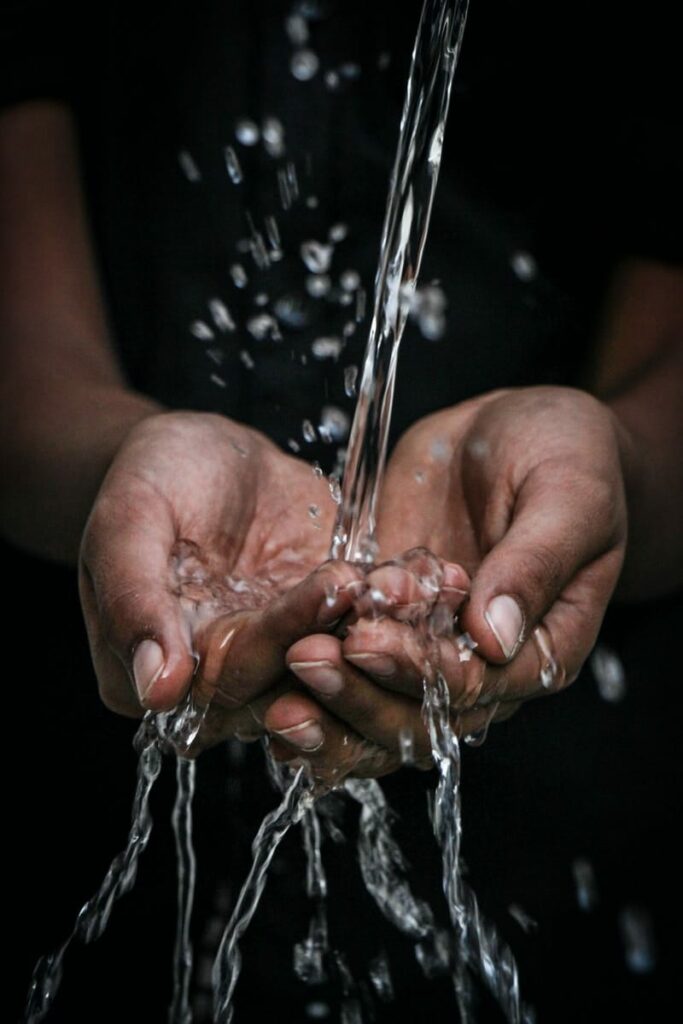
- Wells – Wells is the oldest method of water management, in which people dig a hole deep enough to reach groundwater. Since at least 8000 years ago, people began digging wells and reinforcing wells for stability and accessibility, dating back to the Iron Age.
- Reservoirs – These were among the first ways of managing a water source. A reservoir may be formed by damming or reinforcing a natural stream or lake to limit water flow and concentrate it in a specific location. Reservoirs hold fresh groundwater and collect and store rainwater, which helps stabilize and predict a water supply. Reservoirs have been used for crop irrigation since 3000 BC, when some craters of extinct volcanoes were then used as reservoirs.
- Step wells – As far as 200-400 AD, the Indians dug huge wells to ensure a steady water supply during seasonal droughts. These complex structures, which resembled reservoirs rather than conventional wells, were essential to everyday life in ancient India. These wells are now considered architectural marvels, having developed into water reservoirs and religious and social spaces.
- Aqueducts – While reservoirs and wells improve local water access and availability, aqueducts were the first technology that enabled people to transfer freshwater from one location to another. The Assyrians constructed the first aqueducts in the seventh century B.C. There are still ancient aqueduct networks in the Middle East, South Asia, North Africa, the Mediterranean, and North and South America.
- The Romans famously built an aqueduct network in their empire, providing fresh water for private and public spaces such as baths, restrooms, and fountains. Most of these aqueducts exist today, and some are still partially operational. The Roman Empire’s wealth, influence, and reputation were displayed in this abundant water supply, which provided vital water for the population and indoor plumbing, ornamental gardens, and urban sanitation for over a million citizens. This abundance of water became one of the prosperity models that continues to influence us today.
Where does the tap water come from?
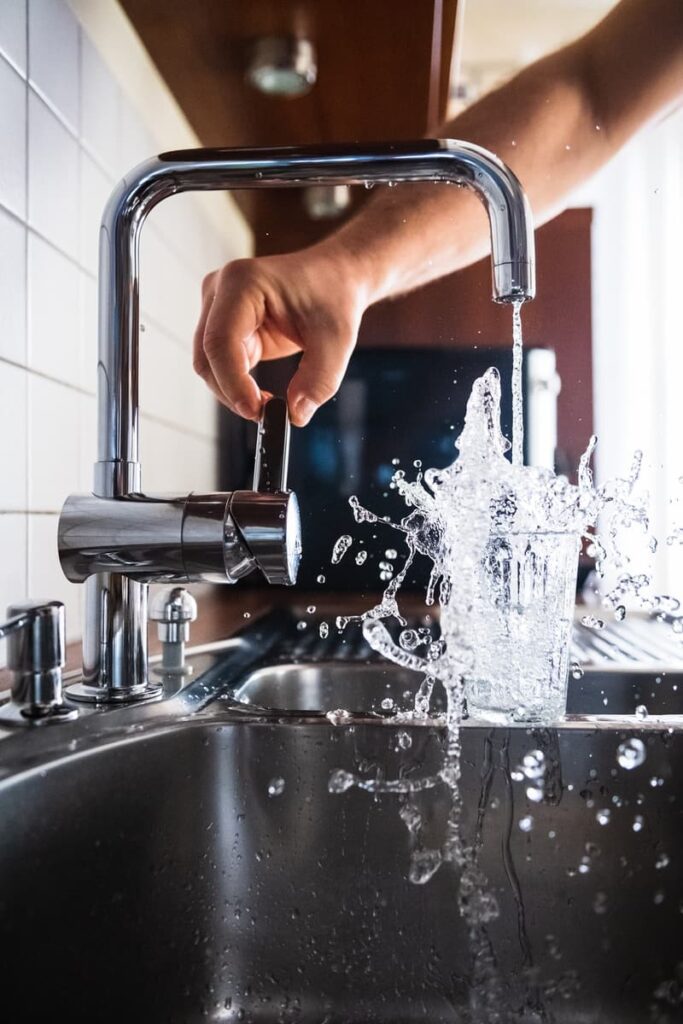
Millennia of innovation, investment, and advancement have resulted in a world where 89 percent of the world’s population has access to clean drinking water. However, as water delivery systems have advanced and refined, potable water still comes from the same sources.
- Groundwater – water contained under the earth, in spaces formed by voids in rock formations or pores in the soil, which can be found to varying degrees worldwide. Aquifers are bodies of freshwater deposited under the earth where groundwater normally pools. However, groundwater sometimes enters the surface as an oasis, spring, or wetland. These freshwater bodies can be reached by digging a well, depending on the composition of the soil or rock above the aquifer.
- Precipitation – Water, of course, falls from the skies in the form of rain. This water is a part of the water cycle and will gradually seep down to become groundwater before being stored in reservoirs or water tanks for later drinking.
- Surface-water – Freshwater from rivers and streams is considered surface water. Surface water may flow upward from groundwater, forming a spring, or down from higher elevations in the form of snow or glacial melt. Rivers are frequently made up of water from different sources, as they can have a groundwater source accompanied by seasonal snowmelt and precipitation. This water is frequently the most readily available to people and is easily used for irrigation and waste disposal, but it is often the most prone to pollution. Surface water is freshwater, but it is often unfit for human use if left untreated.
The source of your drinking water is determined by the water sources that are most easily accessible and available in your neighborhood. Tap water is often referred to as “improved water” by most people in the developing world. This is because a unified municipal authority, the government or utility service, collects, treats, and distributes it.
Substances that may be found in water
Rivers, streams, lakes, reservoirs, ponds, wells, and springs are among the drinking water sources (both tap and bottled). Water dissolves naturally occurring minerals and, in some situations, radioactive material as it flows across the land’s surface or through the earth. In addition, it can pick up contaminants caused by the presence of animals or human activity.
To ensure that drinking water is safe, the United States Environmental Protection Agency (U.S. EPA) and the State Water Resources Control Board impose regulations limiting the number of such pollutants in water supplied by public water systems.
The U.S. Food and Drug Administration regulations and California law set thresholds for pollutants in bottled water that offer the same public health protections. As a result, drinking water, which includes bottled water, can contain trace amounts of contaminants. However, contaminants do not always imply that the water is unsafe to drink.
How is my water treated?
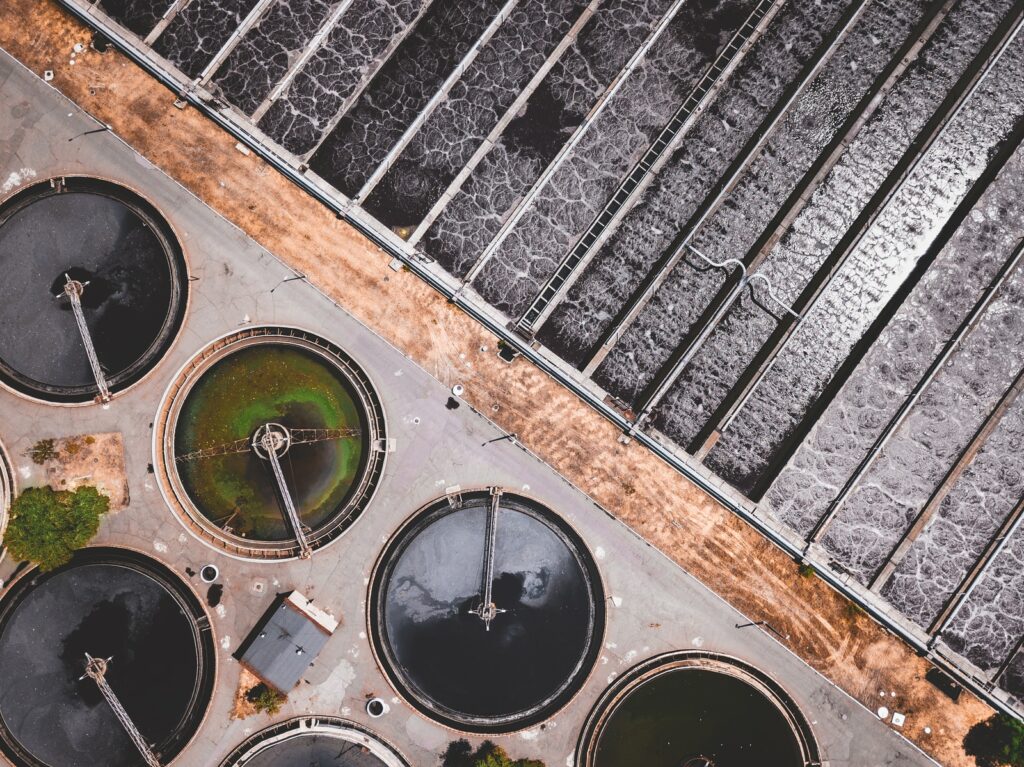
The majority of us get our water from a municipal water treatment plant. In most countries, freshwater is collected and pumped into reservoirs, where it is stored for use in the water supply. Water can be obtained from groundwater, ponds, or dams: anywhere freshwater is abundant. Water treatment plants are usually situated near the source of the water.
Natural freshwater is obtained during the improvement process and then subjected to a series of tests to ensure it is safe to drink. Water is generally processed in the following ways:
- Screening – the water is filtered through a screen filter to eliminate debris such as twigs, leaves, or large particles that can interfere with subsequent processing. This is the most common form of filtration that functions similarly to a coffee filter.
- pH correction – the water is analyzed to see whether it is alkaline or acidic. Because of local soil and mineral composition, some natural water sources are more acidic than others. Since acidic water is much more difficult to filter and corrosive to pipes, the pH of water is often adjusted to increase alkalinity.
- Coagulation to eliminate debris – Natural water contains tiny clay and silt particles, bacteria, and algae. Compounds are introduced into the water to trap these tiny particles and cause them to solidify, resulting in larger particles that are strong enough to naturally sink to the water’s bottom. The most popular coagulant treatments are iron and aluminum salts.
- Sedimentation – the water is then able to slowly pool and flow. Impurities fall to the bottom of the water during this extended period of absolute stillness. The top layer of water gradually passes on for more processing while the sediment sits at the tank’s bottom.
- Further filtration – While coagulation is effective for certain inorganic particles, it is not effective for all of them. Therefore, to extract as many tiny inorganic particles as possible, the water is filtered more finely, often several times. This is usually accomplished by filtering the water through the sand to imitate the natural water flow flowing down to the aquifer.
- Disinfection – Organic contaminants such as viruses and bacteria are not always removed or killed by filtration. The water must be disinfected so that organic matter is eliminated. This is usually achieved with chlorine, which destroys dangerous microorganisms rapidly.
After all this processing, the water is potable and ready to be delivered to your home through the tap water system. However, some cities may process the water further, adding fluoride or conditioning it to soften it.
Water processing requires a lot of resources. For example, most cities spend 30-40% of their total energy on treating drinking water and wastewater, and it uses 4% of all energy in the United States.
Water testing and regulations
The Safe Water Drinking Act of 1974 mandates all public water systems in the United States to meet Environmental Protection Agency requirements for safe drinking water. Regulations issued by the EPA specify both mandatory specifications and target standards for pollutants in drinking water. The regulations extend to the following:
- Microorganisms – Two tests are needed to satisfy requirements for microorganisms such as coliform bacteria, Giardia lamblia, enteric viruses, and Legionella.
- Disinfectants – permitted amounts of chlorine, chloramine, and chlorine dioxide must not be exceeded in water.
- Disinfection byproducts – the EPA has established guidelines for acceptable amounts of bromate, chlorite, halo-acetic acids, and trihalomethanes.
- Inorganic Chemicals – Antimony, lead, cadmium, arsenic, chromium, nitrates, mercury, and thallium are inorganic chemicals that must not exceed permitted amounts.
- Organic Chemicals – various organic compounds such as benzene, PCBs, dioxin, and pesticides are controlled.
- Radionuclides – Besides radionuclides, the EPA requires photon emitters, particles, uranium, radium, and radon.
- Lead – Lead standards to keep evolving and become more stringent over time, not just in water but also in plumbing, soldiers, pipes, and fixtures.
Public water systems should regularly monitor and scrutinize their water using EPA-approved protocols in EPA-certified labs or agencies. It must inform customers if a public water system breaches drinking water laws or requirements.
Community water systems that serve the same people every year must have an annual “Consumer Confidence Report” to their consumers, describing the levels of pollutants in the water and highlighting any public health risks.
Distribution of water
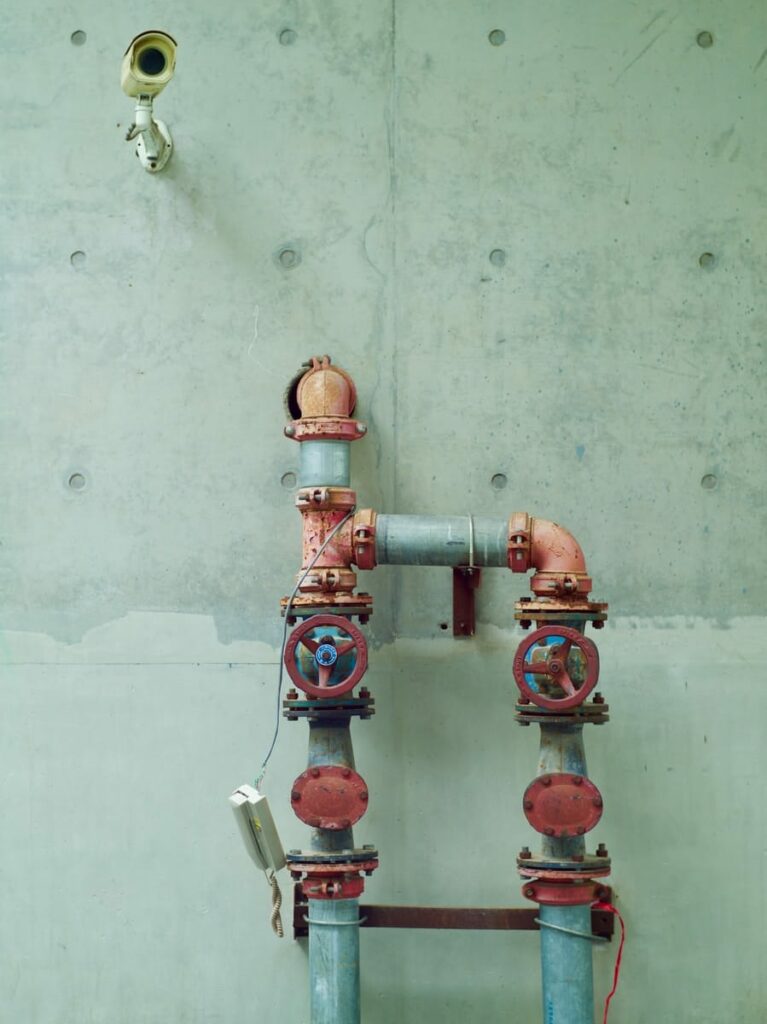
After drinking water is filtered and meets the Safe Drinking Water Standards of the United States Environmental Protection Agency, it is delivered to storage facilities where businesses and homes can obtain safe, clean drinking water directly from their taps.
Water delivery networks in the United States extend almost one million miles and serve about 300 million people. Pipes, pumps, control valves, meters, pumps, hydrants, and storage tanks, are commonly found underground in distribution systems.
Water distribution systems must have an adequate amount of water and immense pressure. Water comes to a halt when there is no pressure.
Water pressure is produced by pumping water to a water tower or a high-altitude water tank. When water flows down, it generates force, which causes the water to flow via the mains and pipes. The average residential water pressure is between 45 and 80 pounds per square inch (psi).
Water transport pipes can be constructed with a variety of materials.
- Steel
Steel is the strongest and most versatile material used for water supply pipes. It is a carbon and iron alloy.
- Iron or galvanized steel
These pipes have a zinc coating to keep them from rusting. However, once widespread, the use of these materials is dwindling because pipes corrode over time, imparting an unpleasant taste and odor to the water.
- Cast iron
This iron alloy has been used in water distribution pipes for hundreds of years. It is still used today due to its extreme durability.
- Asbestos-cement and concrete cement
Concrete cement pipes are still in use and are resistant to erosion, whereas asbestos cement pipes were popular in the early to mid-1900s, particularly in the western states.
They account for 12 to 15% of the country’s drinking water systems. Asbestos has been outlawed in many countries due to health concerns about workers inhaling it. However, some health experts have also expressed concern about the potential health effects of asbestos fibers leached into water from old pipes.
- Copper
Copper is a red-brown elemental metal that is durable, lightweight, and naturally corrosion-resistant. However, small amounts of copper can leach into the water from copper pipes. While leached copper poses no health risk to most people, it harms those with certain medical conditions, such as Wilson’s Disease.
- PVC (Polyvinyl Chloride)
PVC is a rigid plastic typically only used for cold water mains and pipes because it degrades when exposed to heat.
- Chlorinated Polyvinyl Chloride (CPVC)
It is a type of plastic that can withstand temperatures up to 180 degrees Fahrenheit and is used in hot and cold water pipes.
- The cross-linked polyethylene (PEX)
PEX is a versatile, lightweight, low-cost plastic that replaces per and galvanized steel. It is installed in 60% of new residential water supply systems. However, some reports say PEX pipes can leach odors and potentially dangerous chemicals into drinking water.
- Lead
Before Congress outlawed it in 1986 to avoid childhood lead poisoning, this malleable elemental metal was used to produce and solder pipes. As a result, more than ten million homes get their water from lead water service lines (the pipes that link main service lines to a house’s plumbing system).
What cities in the United States have the best drinking water?
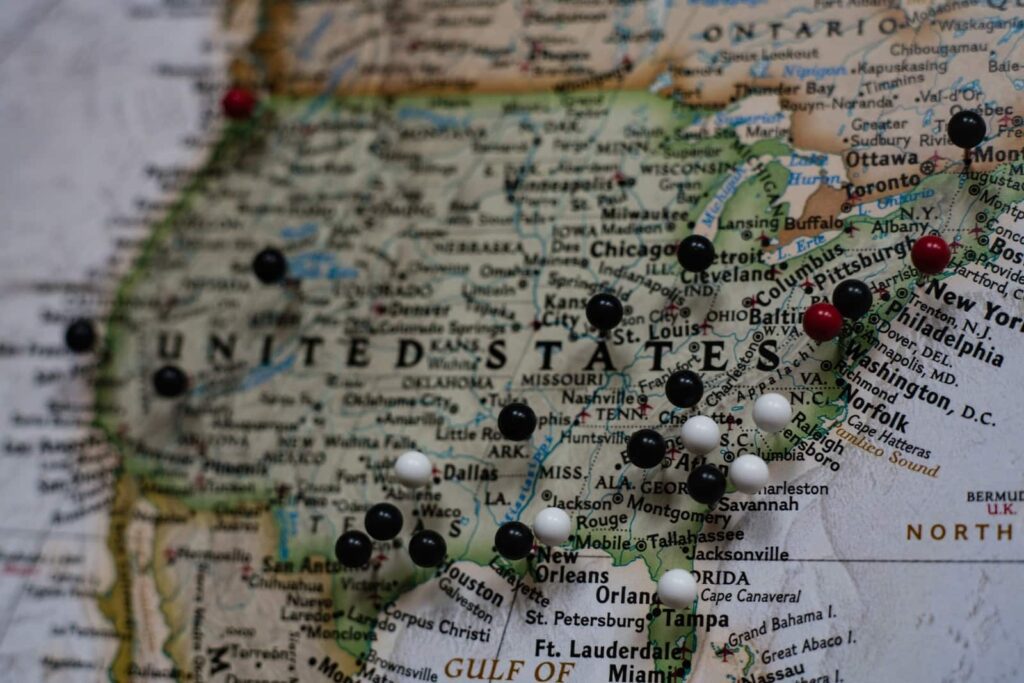
Not only should good tap water be safe, meeting or exceeding EPA requirements, but it should also smell and taste good. But, of course, the taste is subjective. Annually, many organizations conduct tap water taste experiments with widely disparate findings.
The most prominent of these bodies, the Berkeley Springs International Water Tasting competition, named the best tap water in the United States in 2018 to be:
- Hamilton, Ohio
- Santa Ana, California
- Desert Hot Springs, California
- Independence, Missouri
- Eldorado Springs, Colorado
Clearbrook, British Columbia, Canada, won the Berkeley Springs International Water Tasting competition’s 2018 award for best-tasting water worldwide. Clearbrook is the category’s defending champion.
However, the taste isn’t everything. According to EPA rankings and water testing, the cleanest drinking water in the United States in 2017 can be found in:
- Sioux Falls, South Dakota (a repeat winner)
- Louisville, Kentucky
- Savannah, Georgia
- Tallahassee, Florida
- Charleston, South Carolina
Meanwhile, according to UNESCO, the United States isn’t even in the top ten of the world’s cleanest water. Their list of the best tap water in the world is as follows:
- Finland
- Canada
- New Zealand
- United Kingdom
- Japan
- Norway
- Russia
- Korea
- Sweden
- France
The history of tap water and how it gets to our homes is complicated and fascinating. However, the lion of people worldwide has immediate and safe access to clean, drinkable water from the comfort of their homes. It is a major accomplishment, the outcome of thousands of procedures, inventions, and advancements.
For the first time in history, most parts of the developing world are free of water-borne diseases such as botulism, cholera, dysentery, Giardiasis, and typhoid. However, these diseases continue to kill 1.5 million people worldwide,e with about a million deaths due to a lack of clean water for hygiene and sanitation.
To ensure the water that everyone has access to clean water, we must reduce water contamination and protect the fresh water supply. It is a resource that must be safeguarded and shared by all.
And we need to develop solutions that will reduce the massive energy costs of water treatment and processing, making systems available to people in less affluent countries. Finding cost-effective ways to store and treat water would be the next major step in human civilization’s history.
Why does drinking water come from different sources?
Where the water comes from is determined by supply and demand. For instance, towns in the south of England typically transfer water to keep supplies moving.
For example, if many people in Glasgow suddenly used a lot of water and local supplies became depleted, the network would depend on water being transferred from Bournemouth to meet demand.
There are some incredibly interesting examples of this throughout the United Kingdom, including the Isle of Wight, where water supply relies on the mainland (near Bournemouth) when water levels are low.
Why is tap water hard in different places?
You won’t notice it unless you live up north and need to use water in the south (or vice versa).
Even though there are pockets of mildly hard water in the north around Liverpool, Edinburgh, and Newcastle, a dividing line divides the country into soft water and hard water.
From roughly Nottingham south, a large part of the country must rely on groundwater sources for water. Many of these pools are located beneath the limestone and chalk aquifers. Water will absorb some of the minerals as it filters through, which is why it will taste similar but feel different when you shower or wash your hair.
Is tap water completely safe to drink?
You should be confident that your water is safe to drink no matter where or when you use a tap in the United Kingdom. We are extremely fortunate in this country to have highly regulated water systems. Therefore, water must meet extremely high standards before it can be used.

Jay
Jay is a health and wellness enthusiast with expertise in water quality and nutrition. As a knowledgeable advocate for holistic well-being, Jay successfully manages Type 2 Diabetes through informed lifestyle choices. Committed to sharing reliable and authoritative insights, Jay combines firsthand experience with a passion for enhancing health."
